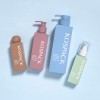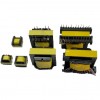Wang believes this curatorial design will build connections between the ancient Dunhuang artand the modern times, and inspire more interest in the spiritual world reflected in the grottoes.
Yongwoo Lee, chief academic advisor for the exhibition, says it is the great faith in Buddhismand love for life that enabled the continual creation of grotto art in Dunhuang for more than 1,000years.
"People had artists painting murals and making statues as their offerings to the Buddha," saysFan Jinshi, honorary director of the Dunhuang Research Academy. She is also known as "thedaughter of Dunhuang" for her preservation efforts.
Born in 1938, she joined the Dunhuang Art Institute upon graduation from Peking University in1963, and has worked there ever since.
Dunhuang art includes examples of secular life, including images of dedicated Buddhists whocommissioned the artworks. Also, folklore, historical stories and social life are among thesubjects of mural art.
Dunhuang is located along the ancient Silk Road, and was a major hub for business and trade.The grotto art reflects the cultural interactions and diverse racial and ethnic composition of thetime, says Wang.
The National Dunhuang Art Institute was founded in 1944, when the protection, research andrestoration of Dunhuang art started. Through the past decades, scholars and researchers from allover the world have worked there, and yet "the more we learn about it, the more we realize howinfinitely deep and boundlessly wide Dunhuang is", says Fan.
"What is the painting about? Why was it painted like that? What era is the building from? Whatwere clothing styles back then? There are millions of questions to be asked and answered," shesays.






